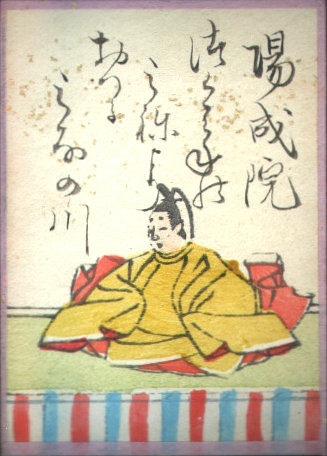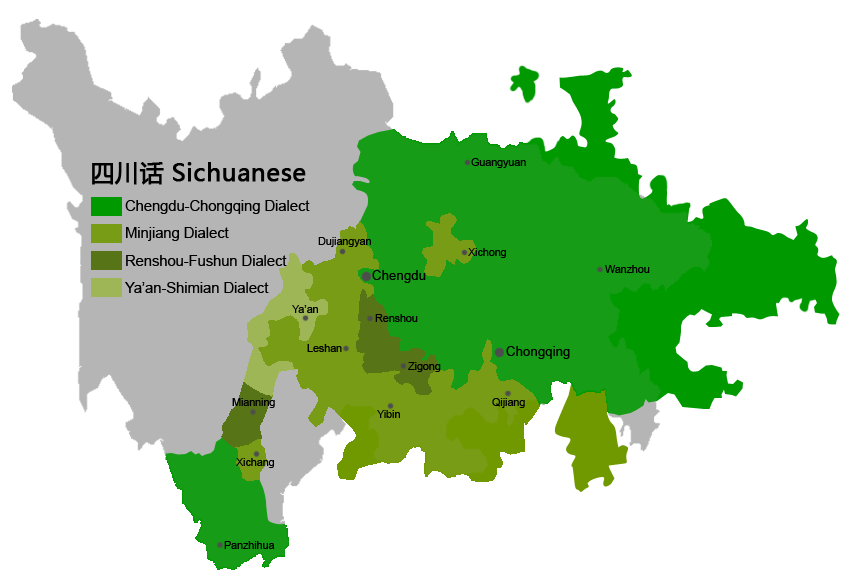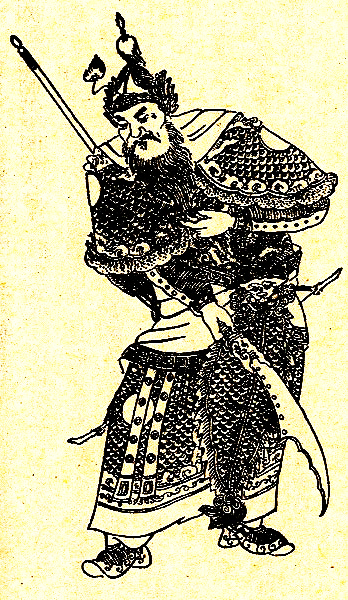|
Chiefdom Of Bozhou
The Chiefdom of Bozhou (), ruled by the Yang clan, was an autonomous ''Tusi'' chiefdom established by Yang Duan () during the Tang dynasty. After he conquered the Bozhou Prefecture (centred on modern Zunyi) from the Nanzhao Kingdom, Yang Duan was recognized as the hereditary ruler of the region by the Tang court in 876. The Yang clan ruled Bozhou for more than seven centuries, surviving several dynastic changes in China, until its last ruler Yang Yinglong rebelled against the Ming dynasty in 1589. It took more than a decade for the Ming to suppress the rebellion, and the Bozhou ''Tusi'' was defeated and abolished in 1600. Bozhou, Sizhou, Shuidong and Shuixi were called "Four Great Native Chiefdom in Guizhou" () by Chinese. "Liangguang uled by Cen and Huang, Sizhou and Bozhou uled byTian and Yang" (), an idiom current among Southwestern Mandarin speakers, proved that the Yang clan was once one of the most powerful clans in Southwestern China. History The Chiefdom of Bozhou wa ... [...More Info...] [...Related Items...] OR: [Wikipedia] [Google] [Baidu] |
Tusi
''Tusi'', often translated as "headmen" or "chieftains", were hereditary tribal leaders recognized as imperial officials by the Yuan, Ming, and Qing dynasties of China, and the Later Lê and Nguyễn dynasties of Vietnam. They ruled certain ethnic minorities in southwest China and the Indochinese peninsula nominally on behalf of the central government. This arrangement is known as the ''Tusi System'' or the ''Native Chieftain System'' (). It should not to be confused with the Chinese tributary system or the Jimi system. ''Tusi'' were located primarily in Yunnan, Guizhou, Tibet, Sichuan, Chongqing, the Xiangxi Prefecture of Hunan, and the Enshi Prefecture of Hubei. ''Tusi'' also existed in the historical dependencies of China in what is today northern Myanmar, Laos, and northern Thailand. Vietnam also implemented a ''Tusi'' system under the Later Lê and Nguyễn dynasties. In 2015, UNESCO designated three ''Tusi'' castles (Laosicheng, Tangya, and Hailongtun) as part of the "T ... [...More Info...] [...Related Items...] OR: [Wikipedia] [Google] [Baidu] |
Chiefdom Of Shuixi
Mu'ege ( Nasu: ; ) was a Nasu Yi chiefdom in modern Guizhou that existed from 300 to 1698. Since 1279, Mu'ege was conquered by the Yuan dynasty and became Chiefdom of Shuixi () under the Chinese ''tusi'' system. Shuixi was one of the most powerful clans in Southwestern China; the chiefdoms of Bozhou, Sizhou, Shuidong, and Shuixi are collectively called the "Four Great Native Chiefdoms of Guizhou" () in Chinese historiography. In 1698, it was fully annexed into the central bureaucratic system of the Qing dynasty. Origin According to Nasu Yi legend, they are descended from Dumuwu, whose three wives bore him six sons. These six sons migrated southwest and created the Wu, Zha, Nuo, Heng, Bu, and Mo clans. During the 4th and 3rd centuries BC, the Heng, Bu, and Mo clans migrated east across the Wumeng Mountain range. The Heng clan divided into two branches. One branch, known as the Wumeng settled along the western slope of the Wumeng Mountain range, extending their control as far ... [...More Info...] [...Related Items...] OR: [Wikipedia] [Google] [Baidu] |
876 Establishments
__NOTOC__ Year 876 ( DCCCLXXVI) was a leap year starting on Sunday (link will display the full calendar) of the Julian calendar. Events By place Byzantine Empire * At the invitation of Benevento, the newly-restored Byzantine fleet appears in the waters off Otranto. On the orders of Emperor Basil I, the Byzantines sail up the Adriatic Sea and reconquer part of southern Italy. The city of Bari is occupied in the name of the Byzantine Empire. Instead of holding it for his 'ally' Adelchis of Benevento, Basil makes it the capital of the new Byzantine Theme of Longobardia. Europe * August 28 – King Louis the German dies at Frankfurt, while preparing for war against his brother Charles II ("the Bald"), ruler of the Holy Roman Empire. The East Frankish Kingdom is divided among his three sons: Carloman receives Bavaria and styles himself "King of Bavaria". Louis the Younger receives Saxony (with Franconia and Thuringia), and Charles the Fat receives Swabia (with Raeti ... [...More Info...] [...Related Items...] OR: [Wikipedia] [Google] [Baidu] |
History Of Guizhou
Guizhou (; formerly Kweichow) is a landlocked province in the southwest region of the People's Republic of China. Its capital and largest city is Guiyang, in the center of the province. Guizhou borders the autonomous region of Guangxi to the south, Yunnan to the west, Sichuan to the northwest, the municipality of Chongqing to the north, and Hunan to the east. The population of Guizhou stands at 38.5 million, ranking 18th among the provinces in China. The Dian Kingdom, which inhabited the present-day area of Guizhou, was annexed by the Han dynasty in 106 BC. Guizhou was formally made a province in 1413 during the Ming dynasty. After the overthrow of the Qing in 1911 and following the Chinese Civil War, the Chinese Communist Party took refuge in Guizhou during the Long March between 1934 and 1935. After the establishment of the People's Republic of China, Mao Zedong promoted the relocation of heavy industry into inland provinces such as Guizhou, to better protect them from ... [...More Info...] [...Related Items...] OR: [Wikipedia] [Google] [Baidu] |
Hailongtun
Hailongtun () is a ruined fortress on the Longyan Mountain, in Hailongtun Village, Gaoping Town, Zunyi City, Guizhou Province, China. It was the stronghold of the Chiefdom of Bozhou until its destruction by the Ming dynasty after the Bozhou rebellion. Hailongtun is an example of a well-preserved medieval castle in China. It is one of the three Tusi sites designated by the UNESCO as a World Heritage Site on July 3, 2015.Laosicheng becomes the First World Cultural Heritage in Hunanrednet.cn (04-Jul-15)/ref> Hailongtun was established in 1257 during the Southern Song dynasty. It served as the stronghold of the Chiefdom of Bozhou, ruled by the Yang family, from the Southern Song to the Ming dynasty. In the 28th year of the Wanli reign (1600), the Ming defeated the Bozhou rebellion The Bozhou rebellion () was a Miao uprising that occurred in Guizhou and spread to Sichuan and Huguang between 1589 and 1600 during the Ming dynasty. Events In 1589, the Bozhou Tusi region (Zunyi, G ... [...More Info...] [...Related Items...] OR: [Wikipedia] [Google] [Baidu] |
Yuan Dynasty
The Yuan dynasty (), officially the Great Yuan (; xng, , , literally "Great Yuan State"), was a Mongol-led imperial dynasty of China and a successor state to the Mongol Empire after its division. It was established by Kublai, the fifth khagan-emperor of the Mongol Empire from the Borjigin clan, and lasted from 1271 to 1368. In orthodox Chinese historiography, the Yuan dynasty followed the Song dynasty and preceded the Ming dynasty. Although Genghis Khan had been enthroned with the Han-style title of Emperor in 1206 and the Mongol Empire had ruled territories including modern-day northern China for decades, it was not until 1271 that Kublai Khan officially proclaimed the dynasty in the traditional Han style, and the conquest was not complete until 1279 when the Southern Song dynasty was defeated in the Battle of Yamen. His realm was, by this point, isolated from the other Mongol-led khanates and controlled most of modern-day China and its surrounding areas, including ... [...More Info...] [...Related Items...] OR: [Wikipedia] [Google] [Baidu] |
Song Dynasty
The Song dynasty (; ; 960–1279) was an imperial dynasty of China that began in 960 and lasted until 1279. The dynasty was founded by Emperor Taizu of Song following his usurpation of the throne of the Later Zhou. The Song conquered the rest of the Ten Kingdoms, ending the Five Dynasties and Ten Kingdoms period. The Song often came into conflict with the contemporaneous Liao, Western Xia and Jin dynasties in northern China. After retreating to southern China, the Song was eventually conquered by the Mongol-led Yuan dynasty. The dynasty is divided into two periods: Northern Song and Southern Song. During the Northern Song (; 960–1127), the capital was in the northern city of Bianjing (now Kaifeng) and the dynasty controlled most of what is now Eastern China. The Southern Song (; 1127–1279) refers to the period after the Song lost control of its northern half to the Jurchen-led Jin dynasty in the Jin–Song Wars. At that time, the Song court retreated south of the ... [...More Info...] [...Related Items...] OR: [Wikipedia] [Google] [Baidu] |
Southwestern China
Southwest China () is a region in the south of the People's Republic of China. Geography Southwest China is a rugged and mountainous region, transitioning between the Tibetan Plateau to the west and the Chinese coastal hills (东南丘陵) and plains to the east. Key geographic features in the region include the Hengduan Mountains in the west, the Sichuan Basin in the northeast, and the karstic Yungui Plateau in the east. The majority of the region is drained by the Yangtze River which forms the Three Gorges in the northeast of the region. The narrowest concept of Southwest China consists of Sichuan, Chongqing, Yunnan, and Guizhou, while wider definitions often include Guangxi and western portions of Hunan. The official government definition of Southwest China includes the core provinces of Sichuan, Chongqing, Yunnan, and Guizhou, in addition to the Tibet Autonomous Region. History Portions of Southwest China were incorporated in the 3nd century BCE into the Qin dyna ... [...More Info...] [...Related Items...] OR: [Wikipedia] [Google] [Baidu] |
Southwestern Mandarin
Southwestern Mandarin (), also known as Upper Yangtze Mandarin (), is a Mandarin Chinese language spoken in much of Southwest China, including in Sichuan, Yunnan, Chongqing, Guizhou, most parts of Hubei, the northwestern part of Hunan, the northern part of Guangxi and some southern parts of Shaanxi and Gansu. Southwestern Mandarin is spoken by roughly 260 million people. If considered a language distinct from central Mandarin, it would be the eighth-most spoken language by native speakers in the world, behind Mandarin itself, Spanish, English, Hindi, Portuguese, Arabic and Bengali. Overview Modern Southwestern Mandarin was formed by the waves of immigrants brought to the regions during the Ming and Qing Dynasties. Because of the comparatively recent move, such dialects show more similarity to modern Standard Mandarin than to other varieties of Chinese like Cantonese or Hokkien. For example, like most Southern Chinese dialects, Southwestern Mandarin does not possess the retroflex ... [...More Info...] [...Related Items...] OR: [Wikipedia] [Google] [Baidu] |
Tian (surname)
Tián (), or T'ien in Wade-Giles is a Chinese surname. An alternative transliteration of "田" from Cantonese is Tin, from Hokkien is Thinn. It appeared in the ''Hundred Family Surnames'' text from the early Song Dynasty. It also means "field". In 2019 it was the 34th most common surname in Mainland China. The same character is Jeon in Korean hanja and is 16th most common in South Korea. Origins * perhaps from a fief called Tian (田), which in Old Chinese is pronounced similar to (陳) in Qi state, which was granted to Chen Wan (陳完), a Prince in the State of Chen, who fled to Qi in order to escape persecution. The Qi clan also went on to rule Qi for many generations. * possibly dates even further back to the post name of an official in charge of the management of farmlands who served the Shang dynasty * adopted in place of the Chinese surname Huang (黃) by the son of the official Huang Zicheng during the Ming Dynasty, in order to avoid persecution. Notable people ... [...More Info...] [...Related Items...] OR: [Wikipedia] [Google] [Baidu] |
Huang (surname)
Huang (; ) is a Chinese surname that originally means and refers to jade people were wearing and decorating in ancient times. While ''Huáng'' is the pinyin romanization of the word, it may also be romanized as Hwang (Korean surname), Hwang, Wong (surname), Wong, Waan, Wan, Waon, Hwong, Vong, Hung, Hong, Bong, Eng, Ng (name), Ng, Uy (surname), Uy, Wee, Oi, Oei, Oey, Ooi, Ong, or Ung due to pronunciations of the word in different dialects and languages. It is the 96th name on the ''Hundred Family Surnames'' poem.K. S. Tom. [1989] (1989). Echoes from Old China: Life, Legends and Lore of the Middle Kingdom. University of Hawaii Press. . This surname is known as Hwang (Korean name), Hwang in Korean language, Korean. In Vietnamese language, Vietnamese, the name is known as Hoàng or Huỳnh. Huang is the 7th most common surname in China. Huynh is the 5th most common surname in Vietnam. The population of Huangs in China and Taiwan was estimated at more than 35 million in 2020; it was a ... [...More Info...] [...Related Items...] OR: [Wikipedia] [Google] [Baidu] |
Cen (surname)
Cen is the Mandarin pinyin romanization of the Chinese surname written in Chinese character. It is romanized Ts'en in Wade–Giles, and variously as Sam, Sum, Sham, Shum in Cantonese, Gim, Khim, Chim in Taiwanese Hokkien and Chen in other pinyin forms. Cen is listed 67th in the Song dynasty classic text ''Hundred Family Surnames''. As of 2008, it is the 235th most common surname in China, shared by 340,000 people. Cen is considered a rare surname. A person with a rare surname like Cen may be able to trace his or her origins to a single ancestral area. Notable people * Cen Peng ( 岑彭; died 36 AD). Han dynasty general. * Cen Hun ( 岑昏; died 280). Government Minister of Eastern Wu. * Cen Derun ( 岑德潤; circa 5th - 6th century), Southern Dynasties poet. * Cen Wenben ( 岑文本; 595–645). Viscount Xian of Jiangling, Tang dynasty chancellor. * Cen Changqian ( 岑長倩; died 691), Tang dynasty chancellor, nephew of Cen Wenben. * Cen Xi ( 岑羲; died 713), Tang dynast ... [...More Info...] [...Related Items...] OR: [Wikipedia] [Google] [Baidu] |








